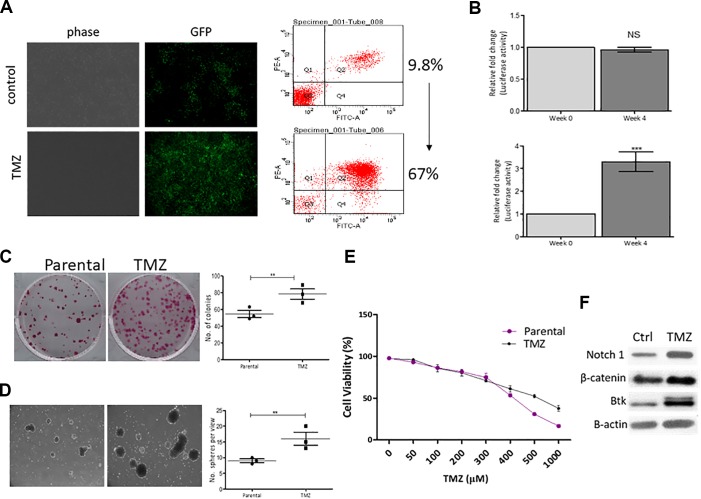Figure 3.
Temozolomide (TMZ) treatment enriches CD133+ glioblastoma multiforme (GBM) cell population with glioma stem cell (GSC) properties. A, Representative fluorescence micrographs (left panels) depict that DBTRG-05MG-CD133-LG post 4-week exposure of TMZ (50 µmol/L) contained an increased CD133+ cell population. Representative flow cytometric analysis shows that TMZ exposure led to a substantial increase in green fluorescent protein (GFP)/CD133+ DBTRG-05MG-CD133-LG cells, from approximately 9.0% to 67%. B, Luciferase assay showed that after 4-week low-dose TMZ exposure, the luciferase activity driven by CD133 promoter in the DBTRG-05MG-CD133-LG was significantly increased as compared to the parental cells. ***P < .001. Comparative colony (C) and neurosphere (D) forming assays. E, Cell viability assay shows that TMZ-treated DBTRG-05MG-CD133-LG became more TMZ resistant (half maximal inhibitory concentration (IC50) value increased from approximately 400-500 µmol/L). E, Western blots depicts the prominently increased expression of stemness markers notch1, β-catenin, and Bruton’s tyrosine kinase (Btk) in the TMZ-treated cells.

